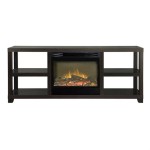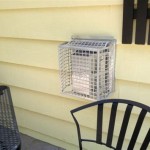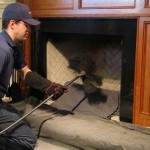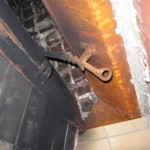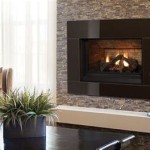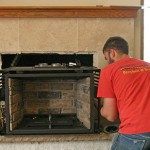Living Room Layout with Fireplace and TV on the Same Wall
Designing a living room layout with both a fireplace and a television sharing a single wall presents a common challenge for homeowners. The fireplace often serves as a natural focal point, while the television is a central element for entertainment. Successfully integrating these two elements requires careful consideration of factors such as room size, furniture placement, viewing angles, and aesthetic balance. The goal is to create a comfortable and visually appealing space that maximizes functionality and minimizes potential conflicts between the two focal points.
The placement of the fireplace and the television on the same wall can lead to design dilemmas. One potential problem is visual competition. Both elements tend to draw the eye, and without proper planning, the space can feel cluttered or unbalanced. Another challenge involves heat management. Placing a television directly above a fireplace can expose it to excessive heat, potentially damaging its internal components. Furthermore, glare from windows or lighting can affect the television's visibility, especially when the fireplace is in use. Therefore, a well-thought-out design strategy is crucial for a harmonious and functional living room.
This article examines various strategies for arranging a living room with a fireplace and a television on the same wall. It discusses different layout options, explores methods for mitigating potential issues related to heat and glare, and provides guidance on selecting appropriate furniture and accessories to enhance the overall aesthetic appeal.
Prioritizing the Focal Points
When designing a living room with a fireplace and a television on the same wall, the first step involves determining the primary focal point. While both elements are significant, one should ideally take precedence. In many cases, the fireplace inherently acts as the dominant feature, especially if it is a prominent architectural element with an elaborate surround or mantel. In such instances, the television should be positioned in a way that complements the fireplace without overshadowing it.
One common approach is to mount the television above the fireplace. This creates a unified vertical arrangement, consolidating the two focal points into a single area. However, this approach requires careful consideration of the television’s height. Placing the television too high can result in neck strain during extended viewing sessions. It is recommended that the center of the television screen be at or slightly below eye level when seated. To achieve this, a lower fireplace mantel or a recessed television mount can be utilized.
Another option is to position the fireplace and the television side-by-side. This approach allows for a more balanced distribution of visual weight. To achieve symmetry, the fireplace and television can be flanked by identical shelves, cabinets, or artwork. This creates a cohesive and visually appealing composition. If the fireplace and television are of different sizes, the larger element should be placed slightly off-center to maintain balance.
An alternative approach is to designate the television as the primary focal point, particularly in homes where entertainment is a priority. In this case, the fireplace can be treated as a secondary element and integrated more subtly into the overall design. This can be achieved by using a smaller fireplace, painting it in a less prominent color, or positioning it slightly off to the side.
Ultimately, the decision of which element should take precedence depends on the specific needs and preferences of the homeowner. Factors such as the frequency of fireplace use, the importance of television viewing, and the overall aesthetic style of the room should all be taken into account.
Addressing Heat and Glare Concerns
When mounting a television above a fireplace, heat management is a crucial consideration. Excessive heat can damage the television's internal components, shortening its lifespan and potentially voiding its warranty. To mitigate this risk, several precautions can be taken.
First, a sufficient amount of vertical space should be maintained between the fireplace mantel and the television. A minimum of 12 inches is generally recommended, but this can vary depending on the size and heat output of the fireplace. A deeper mantel can also help deflect heat upward, preventing it from reaching the television. Alternatively, a specialized heat shield can be installed to further protect the television.
Second, consider the type of fireplace. Electric fireplaces generally produce less heat than traditional wood-burning or gas fireplaces, making them a safer option for mounting a television above. If a traditional fireplace is preferred, consider installing a fireplace insert with a blower fan to direct heat away from the wall. Regular chimney maintenance is also essential to ensure efficient and safe operation.
Glare is another potential issue that can affect the television's visibility, especially when the fireplace is in use. Sunlight streaming through windows or reflections from other light sources can make it difficult to see the screen. To minimize glare, consider using window treatments such as blinds, curtains, or shades. These can be adjusted to control the amount of light entering the room. An anti-glare screen protector can also be applied to the television to further reduce reflections.
The positioning of lighting fixtures is also important. Avoid placing lamps or spotlights directly in front of the television, as this can create distracting reflections. Instead, use ambient lighting to illuminate the room indirectly. Dimmable lights allow for greater control over the overall brightness, making it easier to adjust the lighting to suit different viewing conditions.
Finally, consider the orientation of the television and fireplace in relation to windows. If possible, position them perpendicular to the windows rather than directly facing them. This will help to reduce the amount of direct sunlight that falls on the screen.
Optimizing Furniture Placement and Room Layout
The placement of furniture plays a crucial role in creating a comfortable and functional living room layout with a fireplace and a television on the same wall. The primary goal is to arrange the furniture in a way that maximizes viewing angles and encourages conversation. Several layout options can be considered.
A common approach is to arrange the seating in a semi-circular fashion, facing both the fireplace and the television. This can be achieved by placing a sofa directly opposite the television and flanking it with two armchairs. A coffee table can be placed in the center of the seating area to provide a surface for drinks and snacks.
Another option is to create two distinct seating areas: one focused on the fireplace and one focused on the television. This can be achieved by placing a sofa opposite the fireplace and a separate set of chairs or a loveseat facing the television. This arrangement is particularly suitable for larger living rooms where there is ample space for multiple seating arrangements.
The size and shape of the room will also influence the optimal furniture placement. In a rectangular room, the sofa can be placed along one of the longer walls, facing the fireplace and television. Armchairs can then be positioned on either side of the sofa, creating a symmetrical arrangement. In a square room, the furniture can be arranged in a more circular fashion, with the sofa and chairs facing each other across the coffee table.
Consider the flow of traffic through the room. Ensure that there is ample space to walk around the furniture without obstruction. Avoid placing furniture in doorways or passageways, as this can create congestion. Use rugs to define different areas within the room and to add warmth and texture.
Accessories such as throw pillows, blankets, and artwork can also be used to enhance the overall aesthetic appeal of the living room. Choose colors and patterns that complement the fireplace and television and that reflect your personal style. Plants can add a touch of nature and help to soften the overall look of the room.
Ultimately, the best furniture placement and room layout will depend on the specific dimensions of the living room, the size and style of the fireplace and television, and the preferences of the homeowner. Experiment with different arrangements until you find one that feels comfortable, functional, and visually appealing. Careful planning and attention to detail can transform a challenging space into a cozy and inviting living room.

13 Impressive Living Room Ideas With Fireplace And Tv Lmolnar Family Design Livingroom Layout

Living Room Layouts With Fireplace Tvs Direct Fireplaces

How To Arrange Living Room Furniture With A Tv And Fireplace

Living Room Layouts With Fireplace Tvs Direct Fireplaces

This Is The Layout Yessss With Tv And Fireplace On Separate Diffe Walls Sectional Sof Livingroom Family Room Living Arrangements

How To Arrange Furniture With Two Focal Walls Emily Henderson

Living Room With Fireplace And Tv On Same Wall Google Search Elegant Design

Tv And Fireplace In One Room Find The Perfectly Happy Spot For That Black Beast Form Design Tasteful Interiors Living Well

Layout A Living Room With Tv Fireplace Florida Leather Gallery

How To Arrange Living Room Furniture With A Tv And Fireplace
Related Posts

